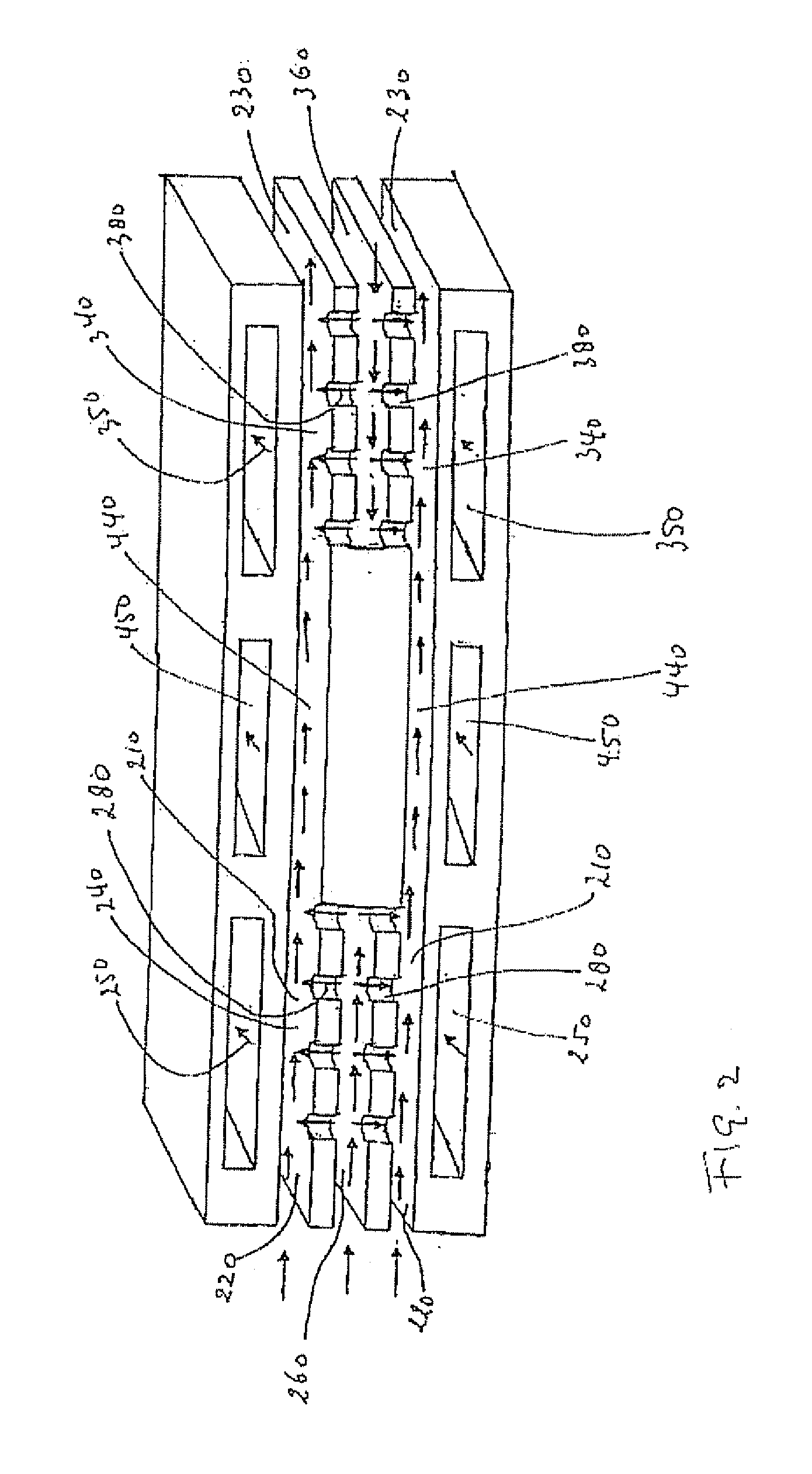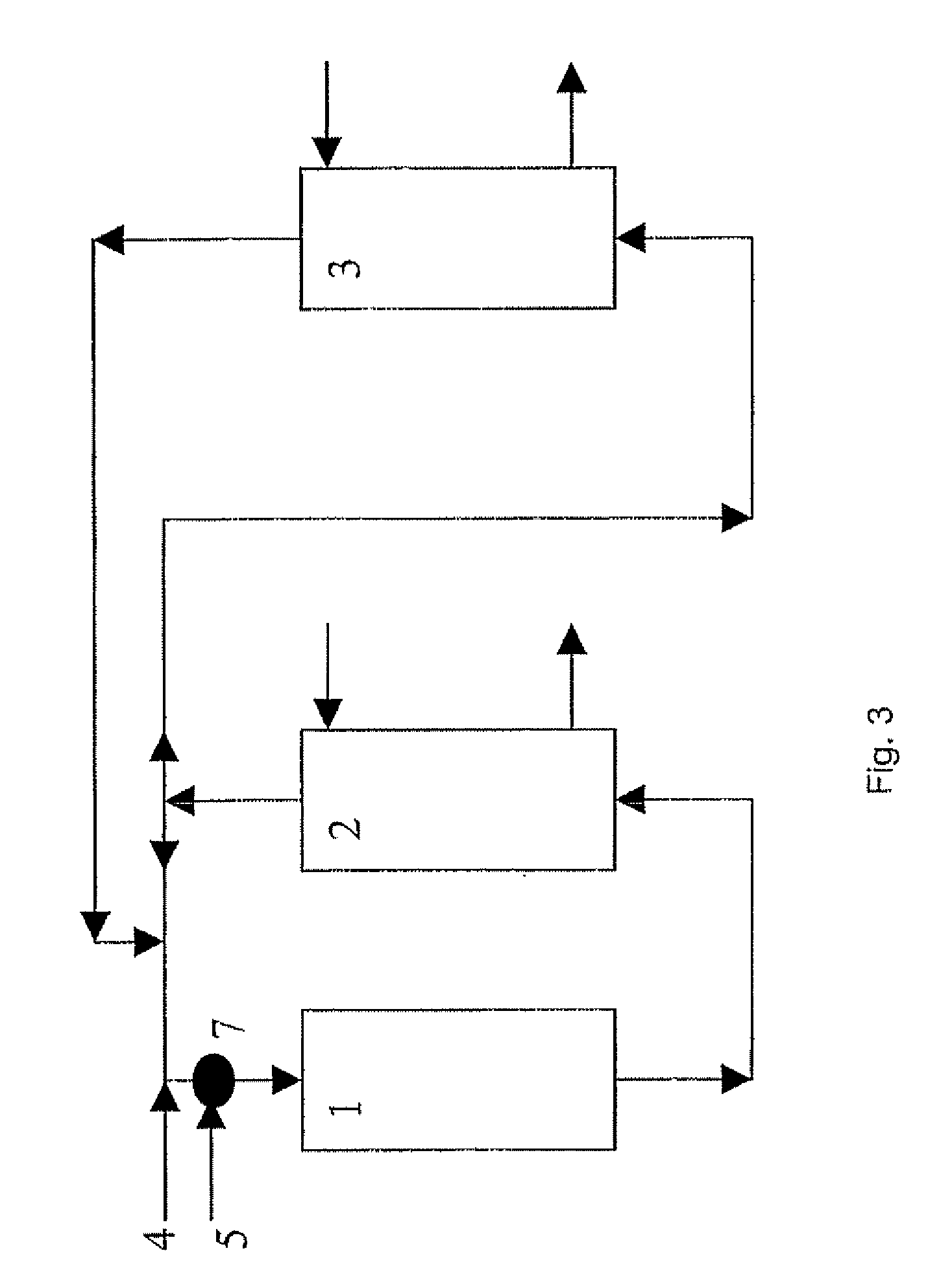Method Of Installing An Epoxidation Catalyst In A Reactor, A Method Of Preparing An Epoxidation Catalyst, An Epoxidation Catalyst, A Process For The Preparation Of An Olefin Oxide Or A Chemical Derivable From An Olefin Oxide, And A Reactor Suitable For Such A Process
- Summary
- Abstract
- Description
- Claims
- Application Information
AI Technical Summary
Benefits of technology
Problems solved by technology
Method used
Image
Examples
example 1
[0463] This prophetic example describes how an embodiment of this invention may be practiced.
[0464] In a 400,000 mt / a ethylene oxide plant the stream of recycle gas to the reactor system is 600 mt / h. This flow mainly consists of methane, ethylene, oxygen, argon, carbon dioxide and nitrogen. The temperature at the reactor inlet is 140° C. and the pressure is 2000 kPa gauge.
[0465] In FIG. 3, over the catalyst inside the reactor 1, ethylene and oxygen are consumed in the production of ethylene oxide (EO) and carbon dioxide (CO2). After scrubbing the reaction product gases with water to absorb EO in EO absorber 2, and scrubbing part of the recycle gas of CO2 in CO2 absorber 3, feed ethylene, via line 4, and oxygen, via line 5, are supplied to the recycle gas before entering the reactor 1. 37.5 mt / h ethylene is fed to the recycle gas and 34.6 mt / h oxygen. From reactor 1 through absorber 2 and absorber 3 and back to the reactor 1, all of these sections plus the interconnecting pipework ...
example 2
[0467] This prophetic example describes how an embodiment of this invention may be practiced.
[0468] In a 400,000 mt / a ethylene oxide plant the stream of recycle gas to the reactor system is 600 mt / h. This flow mainly consists of methane, ethylene, oxygen, argon, carbon dioxide and nitrogen. The temperature at the reactor inlet is 140° C. and the pressure is 2000 kPa gauge. In FIG. 4, over the catalyst inside the reactor 11, ethylene oxide and carbon dioxide are produced. EO is scrubbed in the EO absorber 12 and part of the recycle gas is scrubbed of CO2 in the CO2 absorber 13. The absorbent used for EO scrubbing is typically water with a small concentration of monoethylene glycol (2-10 weight %). Water saturated with ethylene oxide via line 15 from the bottom of the EO absorber 12 is fed to the top of EO stripper 14. The bottoms flow, line 16, of EO stripper 14 is virtually free of EO and recycled back to the top of EO absorber 13. An ethylene oxide-water mixture (typically contain...
example 3
[0470] This prophetic example describes how an embodiment of this invention may be practiced.
[0471] In a 400,000 mt / a ethylene oxide plant the stream of cycle gas to the reactor system is 600 mt / h. This flow mainly consists of methane, ethylene, oxygen, argon, carbon dioxide and nitrogen. The temperature at the reactor inlet is 140° C. and the pressure is 2000 kPa gauge. In FIG. 5, over the catalyst inside the reactor 31, ethylene oxide and carbon dioxide are produced. EO is scrubbed in the EO absorber 32 and part of the recycle gas is scrubbed of CO2 in the CO2 absorber 33.
[0472] The absorbent used for CO2 scrubbing is typically a cycling activated hot carbonate solution. Absorbent saturated with CO2 from the bottom of the absorber 33 is fed via line 35 to the top of CO2 stripper 34. Here CO2 is vented to atmosphere as a waste gas flow 37. On average this CO2 waste gasflow is 18 mt / h in this example. The bottoms flow 36 of the CO2 stripper 34 is lean in CO2 and cycled back to the...
PUM
 Login to View More
Login to View More Abstract
Description
Claims
Application Information
 Login to View More
Login to View More - R&D
- Intellectual Property
- Life Sciences
- Materials
- Tech Scout
- Unparalleled Data Quality
- Higher Quality Content
- 60% Fewer Hallucinations
Browse by: Latest US Patents, China's latest patents, Technical Efficacy Thesaurus, Application Domain, Technology Topic, Popular Technical Reports.
© 2025 PatSnap. All rights reserved.Legal|Privacy policy|Modern Slavery Act Transparency Statement|Sitemap|About US| Contact US: help@patsnap.com



